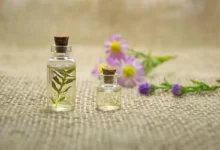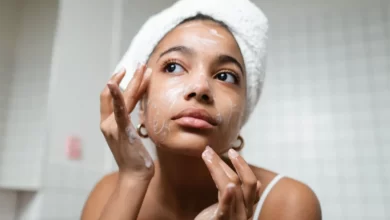The pursuit of radiant, youthful skin is a quest many of us embark upon. With an abundance of skincare products and routines to choose from, it can be challenging to decipher which steps are essential for maintaining healthy skin. One fundamental aspect that often takes center stage in any skincare regimen is exfoliation. In this comprehensive guide, we will explore the significance of exfoliation in your skincare routine, uncover its benefits, and help you navigate the world of exfoliants.
What is Exfoliation?
Exfoliation is the process of removing dead skin cells from the surface of your skin. These dead cells can accumulate, leaving your complexion looking dull, uneven, and potentially leading to clogged pores and breakouts. Exfoliation helps to slough off these dead cells, revealing fresher, smoother, and more radiant skin underneath.
Types of Exfoliation
There are two primary methods of exfoliation: physical and chemical.
1. Physical Exfoliation
Physical exfoliation involves using abrasive materials or tools to physically scrub away dead skin cells. Common physical exfoliants include:
- Scrubs: These contain tiny grains or beads that manually remove dead skin cells when massaged onto the skin.
- Brushes: Facial brushes with soft bristles or silicone bristles can help dislodge dead skin cells when used in gentle, circular motions.
- Microdermabrasion: A professional treatment that uses a machine to exfoliate the skin with tiny crystals or a diamond-tipped wand.
While physical exfoliation can be effective, it should be done with caution, as excessive or harsh scrubbing can lead to microtears in the skin, irritation, or damage.
2. Chemical Exfoliation
Chemical exfoliation relies on the use of various acids or enzymes to dissolve the bonds between dead skin cells, allowing them to be easily shed. Chemical exfoliants are generally considered gentler and more effective than physical exfoliants. There are two main types of chemical exfoliants:
- Alpha Hydroxy Acids (AHAs): AHAs, such as glycolic acid and lactic acid, are water-soluble acids that exfoliate the skin’s surface. They are ideal for improving the texture and tone of the skin.
- Beta Hydroxy Acids (BHAs): Salicylic acid is the most common BHA used in skincare. It is oil-soluble and penetrates deeper into the pores, making it effective for treating acne and clogged pores.
The Benefits of Exfoliation
Incorporating exfoliation into your skincare routine can yield a wide range of benefits for your skin:
1. Improved Skin Texture
Exfoliation helps to smooth rough and uneven skin texture, leaving your skin feeling soft and velvety. Regular exfoliation can also minimize the appearance of fine lines and wrinkles.
2. Enhanced Skin Radiance
By removing the layer of dead skin cells that can make your complexion appear dull, exfoliation reveals brighter, more radiant skin.
3. Prevents Clogged Pores and Acne
Exfoliating can prevent the buildup of dead skin cells and excess sebum, reducing the risk of clogged pores and acne breakouts.
4. Evens Skin Tone
Exfoliants can fade hyperpigmentation, dark spots, and uneven skin tone, leaving you with a more even complexion.
5. Boosts Product Absorption
With a smoother surface, your skincare products, such as serums and moisturizers, can penetrate the skin more effectively, maximizing their benefits.
How Often Should You Exfoliate?
The frequency of exfoliation depends on your skin type and the exfoliation method you choose:
For Physical Exfoliation:
- Sensitive Skin: 1-2 times a week.
- Normal to Combination Skin: 2-3 times a week.
- Oily Skin: 3-4 times a week.
For Chemical Exfoliation:
- AHAs: 2-3 times a week.
- BHAs: 2-4 times a week, depending on your skin’s needs.
It’s essential to listen to your skin. If you notice any signs of over-exfoliation, such as redness, excessive dryness, or increased sensitivity, reduce the frequency of exfoliation.
Tips for Safe and Effective Exfoliation
To make the most of your exfoliation routine and avoid potential pitfalls, consider these tips:
1. Choose the Right Exfoliant
Select exfoliants that are suitable for your skin type and concerns. If you’re uncertain, consult with a dermatologist or skincare professional for guidance.
2. Patch Test
Before using a new exfoliant, do a patch test to ensure your skin doesn’t react negatively. Apply a small amount to a discreet area and wait for 24 hours to check for any adverse reactions.
3. Follow Instructions
Read and follow the instructions on your chosen exfoliant carefully. Overusing or leaving products on for too long can harm your skin.
4. Be Gentle
Whether you’re using a physical or chemical exfoliant, be gentle with your skin. Avoid excessive scrubbing or rubbing, which can lead to irritation.
5. Protect Your Skin
After exfoliation, it’s crucial to protect your skin from the sun. Apply a broad-spectrum sunscreen with at least SPF 30 to prevent UV damage.
6. Stay Hydrated
Exfoliation can temporarily increase skin sensitivity. Ensure your skin stays hydrated by using a suitable moisturizer.
7. Avoid Over-Exfoliation
More isn’t always better. Over-exfoliating can lead to skin irritation and damage. Stick to the recommended frequency for your skin type.
Common Myths About Exfoliation
Before we conclude, let’s dispel some common myths surrounding exfoliation:
Myth 1: Exfoliating Daily Is Best
Exfoliating daily is unnecessary and can be harsh on the skin. Stick to the recommended frequency for your skin type to avoid over-exfoliation.
Myth 2: Scrubs with Large Particles Are More Effective
Larger scrub particles can be abrasive and damaging to the skin. Opt for exfoliants with fine, gentle particles.
Myth 3: Exfoliation Is Only for the Face
Exfoliation can benefit other areas of your body, such as your neck, chest, and elbows. Be sure to use products formulated for these areas.
Myth 4: Exfoliation Causes Thinning of the Skin
When done correctly, exfoliation should not thin the skin. It helps remove the outermost layer of dead skin cells, promoting a healthier complexion.
Conclusion
Exfoliation is a vital step in any skincare regimen, offering numerous benefits for your skin’s health and appearance. Whether you choose physical or chemical exfoliation, the key is to do it safely and according to your skin’s needs. Always consult with a skincare professional if you have specific concerns or conditions.
Remember that beautiful, radiant skin is achievable with the right skincare routine, and exfoliation plays a crucial role in that journey. So, start incorporating this skincare essential into your regimen today, and you’ll be on your way to a more vibrant and youthful complexion in no time.









